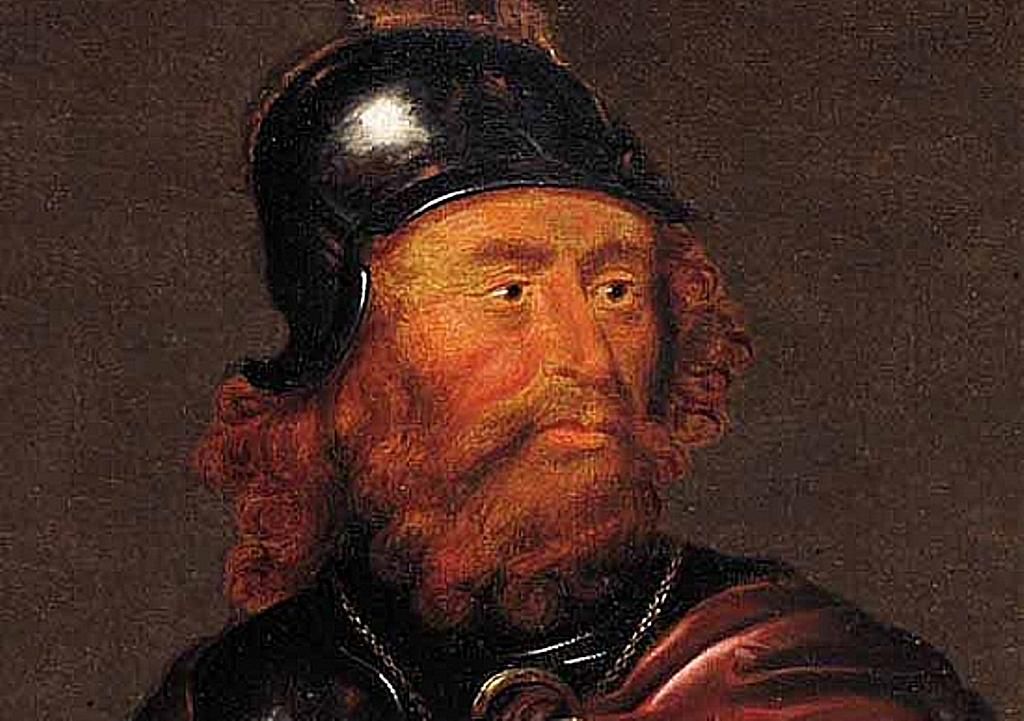
Robert the Bruce was born on July 11, 1274, at Turnberry Castle in Ayrshire, Scotland. His father, Robert VII the Bruce, Lord of Annandale. His family had ruled the area since the 1120s, and they could have been descended from Earl David, the younger brother of William I of Scotland (reigned 1165 – 1214 AD).
Not much is known about his youth. For a time, he either spent years living around the Western Isles or Ulster. In 1292, his mother died, but that same year he was given a claim to the Scottish throne. Although he ultimately failed to take the throne, from that point on he retained a prominent position in the Scottish government.
In 1295, Robert the Bruce married Isabel of Mar. Only a year later, she passed away. The next year, England attacked Scotland. Robert the Bruce temporarily fought with the English, angry at the king put in control of Scotland. During the first year, the Scottish army suffered from heavy casualties, but kept fighting nevertheless. This led to uprising led by notable Scots including by William Wallace and Sir Moray of Bothwell. The rebels were victorious in September 1297 at the Battle of Stirling Bridge.
But next year, 20,000 Scots were massacred at Falkirk. William Wallace sent more armies to fight the English, but was executed in London in year 1305. By 1306, Robert the Bruce became the new figurehead for the Scottish resistance against the English. He, or some of his followers, assassinated John Comyn, his arch rival for the Scottish throne. Then, on March 25, 1306, he was crowned king of Scotland.
The war with England still raged on. English troops hunted down Robert the Bruce’s family. Three of his brothers were executed, while his sister Mary was imprisoned in a cage dangling outside of Roxburgh Castle. His second wife Elizabeth was confined in a manor house at Burstwick.
In 1307, Edward I of England died at age 68, succeeded by his son Edward II. As he was a weak ruler compared to his father, Robert the Bruce found it a little easier to deal with the English. Over the next two years, he crushed his rivals back in Scotland, and in March 1309 was officially declared king, more legitimate than it had been in 1306, when many did not recognize him as the rightful ruler of Scotland.
During the next few years, he warred with the English. Edward II of England tried to attack the Scots in 1311, but was proven unsuccessful. He then tried again in 1314, leading an army straight into Scotland. His goal was to take Stirling castle, and his troops numbered up to 20,000 men while Robert the Bruce had only around 10,000. Edward II, in addition to at least 15,000 infantry, had 2,000 cavalry. But, Robert the Bruce led his men by a narrow, boggy ford, nearby the village of Bannockburn. This would decide the future of Scotland.
On June 23, 1314, the two armies clashed. The next day, after Edward II held back his archers for too long, the Scots pushed through in hedgehog formations, killing off 200 English Knights. Edward II barely escaped Bannockburn. Robert the Bruce, and his men, saved Scotland from English rule. Robert even showed his prowess after a duel with a certain Henry de Bohun, whose head he ruthlessly sliced off with his battle axe.
Robert the Bruce spent the subsequent years asserting his rule, but also cut taxes. The last attempt Edward II made at invading Scotland was once again repelled in 1323, resulting in a truce between both kingdoms which lasted 13 years. The Scots allied with France, a bitter rival of the English and also the most powerful nation in Western Europe.
In 1328, the English themselves recognized Robert the Bruce as the rightful ruler of Scotland. During the last year of Robert’s life, the Papacy itself, the all-powerful institution of medieval Europe, recognized Scotland as an independent dominion equal to that of England, France, and all other dominions.
On June 7, 1329, Robert the Bruce died, most likely from leprosy. He was 54 years old. The legacy of Robert the Bruce lived on in the hearts and minds of the Scottish people, and Scotland remained an independent nation for another four centuries. Although England greatly outnumbered Scotland in population, wealth, power and resources, Robert the Bruce showed his might and ruthlessly fought for the freedom of all Scots.
Today, we can learn from Robert the Bruce. A small nation of good leadership, skilled and patriotic citizens, and a readiness to fight and die for liberty will greatly outweigh any tyranny. Not only that, others will join in the cause for liberty, and although dictatorships show themselves to be all-powerful, they will always fall, never to be seen again. But as people fought for freedom in the Western World in 1314, they did so in 1776, and in 1945. We must hold the same Holy Liberty in our hearts and minds today, and stand up against all odds against our greatest enemies, just as Robert the Bruce once did.
